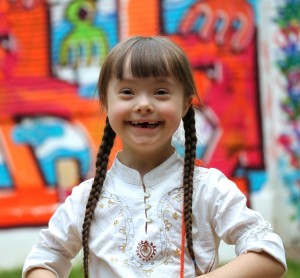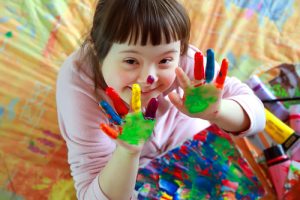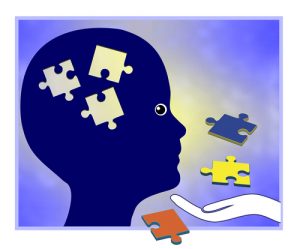Related Products
For Professionals
- Amplification
- Assessment of Student Skills, Challenges, Needs
- Early Childhood: Infants, Toddlers, Preschool
- Hearing Loss – Identification, Impact and Next Steps
- IDEA Law Summary Information
- Language and Speech Development Issues
- Legal Issues in Serving Children with Hearing Loss
- Listening (Auditory Skills) Development
- Planning to Meet Student Needs
- Self-Advocacy Skills for Students with Hearing Loss
- Self-Concept: How the Child with Hearing Loss Sees Himself
- Social Skills
- Speech Perception & Learning
Related Teacher Tools Takeout Items
Deaf PLUS Additional Needs
With
30-40% of all children with hearing loss having one or more additional disabilities (Gallaudet Research Institute, 2005) this is a very important topic for all who care for, support and serve this population. The term “deaf plus” is often used to describe this population which refers to a child’s hearing loss compounded by additional conditions.
According to ongoing tracking in metro Atlanta, the most common developmental disability to co-occur with hearing loss is intellectual disability (23%), followed by cerebral palsy (10%),autism spectrum disorder (7%), and/or vision impairment (5%). Hearing loss may also be related to a number of syndromes .
Individualized Programming is Necessary
 Some of these children can have very a limited skill set. As a result intervention and programming strategies are often very individualized and critical that they focus on the child’s strengths. The child’s ability level and the support model promoted by individual school boards will impact how educational programming is implemented.
Some of these children can have very a limited skill set. As a result intervention and programming strategies are often very individualized and critical that they focus on the child’s strengths. The child’s ability level and the support model promoted by individual school boards will impact how educational programming is implemented.
Itinerant Model:
Itinerant teachers may work directly with a DHH Plus student, consultatively or with the team teaching approach. When the severity of combined learning challenges warrant it, these students are served in a separate setting. Deaf Plus students may require very explicit instruction and unique data collection techniques. In situations where hearing loss is not the primary learning challenge the teacher for the deaf and hard of hearing is often not the case manager or primary instructor. The itinerant teacher for deaf and hard of hearing is likely to address the communication and language issues of these students. Often goals for DHH services are integrated with classroom teacher and other related service professionals such as the teacher of the visually impaired, assistive technology, speech and language, and occupational therapy.
Consultative Model:

The consultation model of teaching students who are deaf and/or hard of hearing with additional disabilities could involve health and educational consultants (audiology, occupational therapy, physical therapy, teachers of the deaf, teachers of the visually impaired, etc.) and may include the following components:
- Observation – Observe class and child’s behavior from a HI perspective
- Provide technical assistance
- Problem solve
- Answer questions
- Support regular staff in implementing goals
Direct Teaching Model:

Components of the direct teaching model for students identified as deaf and hard of hearing with intellectual disabilities, Autism Spectrum Disorder or multiple disabilities may include the following:
- Input:
Vocabulary, Bombard with vocabulary target - Comprehension:
Vocabulary, Student identifies objects/action - Imitation:
Vocabulary, Student imitates word - Use: Vocabulary, Student uses with structure then across settings
Team Teaching Model:
The team teaching approach involves a combination of consultation and direct service. Components include:
- Integrating HI goals with classroom teacher and other related service professionals such as: the teacher of the visually impaired, assistive technology, occupational therapy, and speech and language therapy.
- Support classroom in implementing goals
- Problem solve
- Answer questions
- Provide technical assistance
- Teach specific listening skills
- Support Language development
- Develop communication both expressive and receptive

The following information on serving children who are Deaf Plus was written by Andrea Mills Blackwood and Lynne Price as part of the 2014-2015 Teacher Tools membership year:
Connect to the Curriculum
Universal Design for Learning
Using Object Schedules
Assessments
Story-Based Lessons
Multiple Challenges = Multiple Opportunities
Find all these resources in the Bundle of All Multiple Disabilities information
REFERENCES:
Gallaudet Research Institute (December 2005).
Regional and National Summary Report of Data from the 2004 – 2005 Annual Survey of Deaf and Hard of Hearing Children and Youth.
Washington, D.C.: Gallaudet Research Institute, Gallaudet University.
RESOURCES:
Minerva Deaf Research Lab – Tutorials: Supporting Deaf Plus Learners
About Deaf Students with Additional Needs
Cerebral Palsy and Children with Vision and Hearing Loss
There are a number of resources for children who have both hearing and vision loss. Much of this information can be applicable to children with hearing loss and other significant disability conditions:
Paths to Literacy
Early Literacy Video
Classroom Resources
When Deaf People Have Autism
Downloadable PDFs:
Posted January 2016. Revised April 2017 with input of Krista Yuskow, to whom we are truly appreciative!
Last revised July 2023

